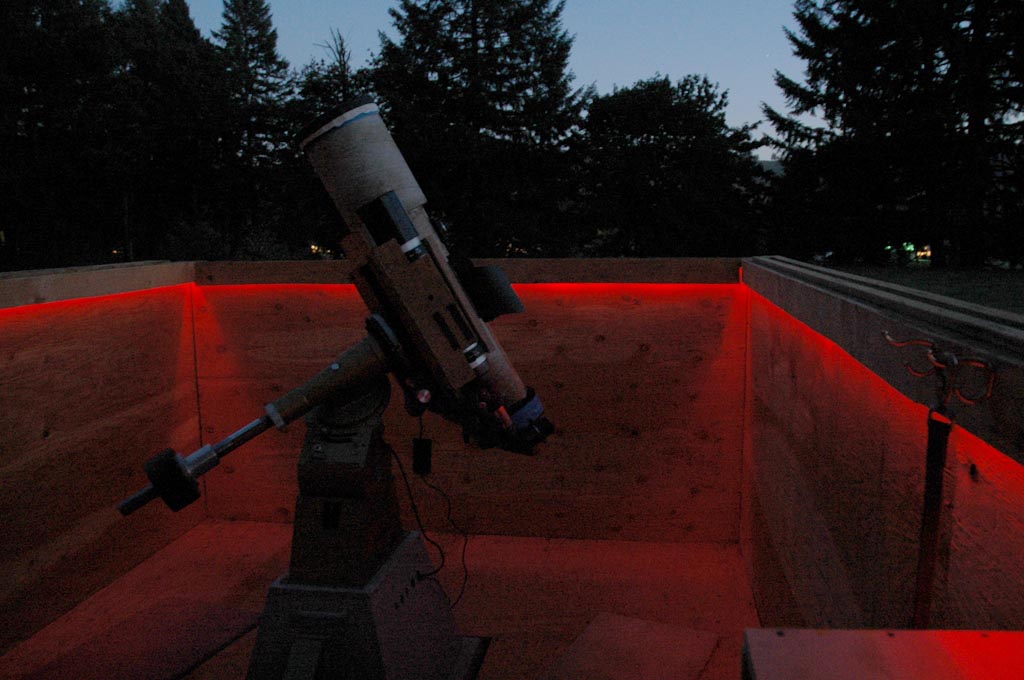Alpaca Meadows Observatory |
Alpaca Meadows Observatory is the successor to my old Gneiss Ledge Observatory. My goal in designing this observatory was a comfortable and compact shelter for my imaging telescope. I chose a roll-off-roof design because I like to work under the open sky. I chose a relatively low wall height to give the telescopes access to the horizon. The building is supported on 4x4 posts, and the side walls are made of rough plywood. At present, it is not painted.
|
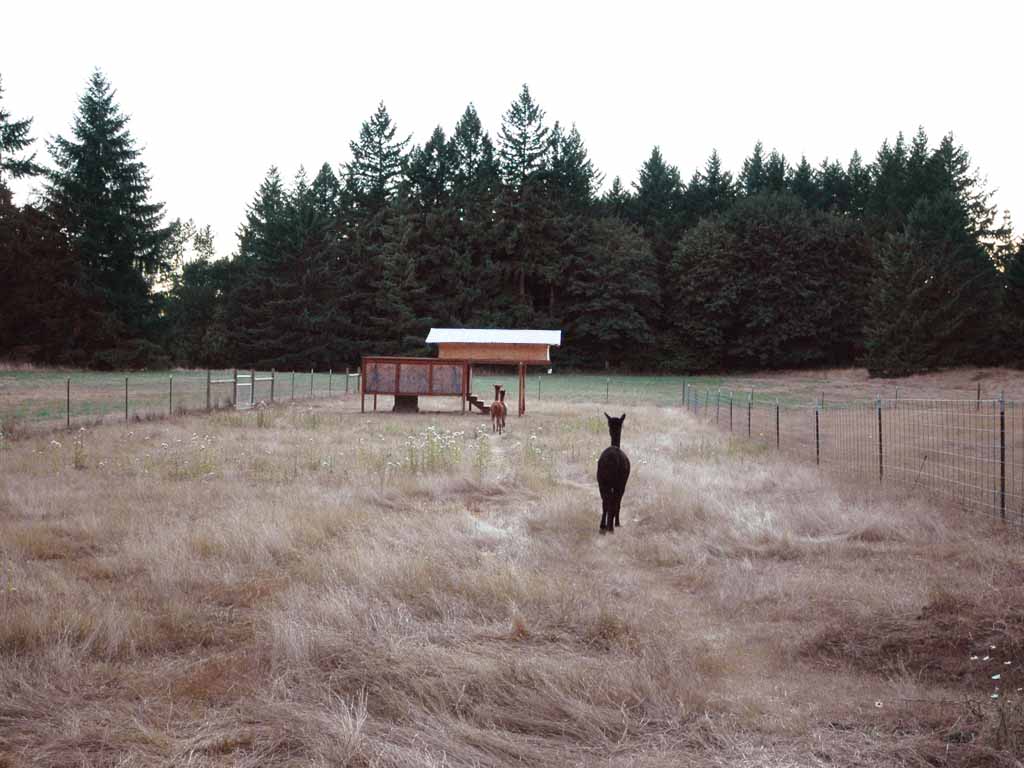 |
Last winter, in a violent storm, the original roll-off roof lifted off, flew some 40 feet, and landed up-side-down. Needless to say, it was a devastating experience! The new roof is more solidly built, and incorporates features for tying it down so it won't lift off. I replaced the original 30% transparent Suntuf polycarbonate roof panels with white panels, and increased the roof overhang from 12 inches to 16 inches all around. In normal rains, the walls of the building never even get wet.
|
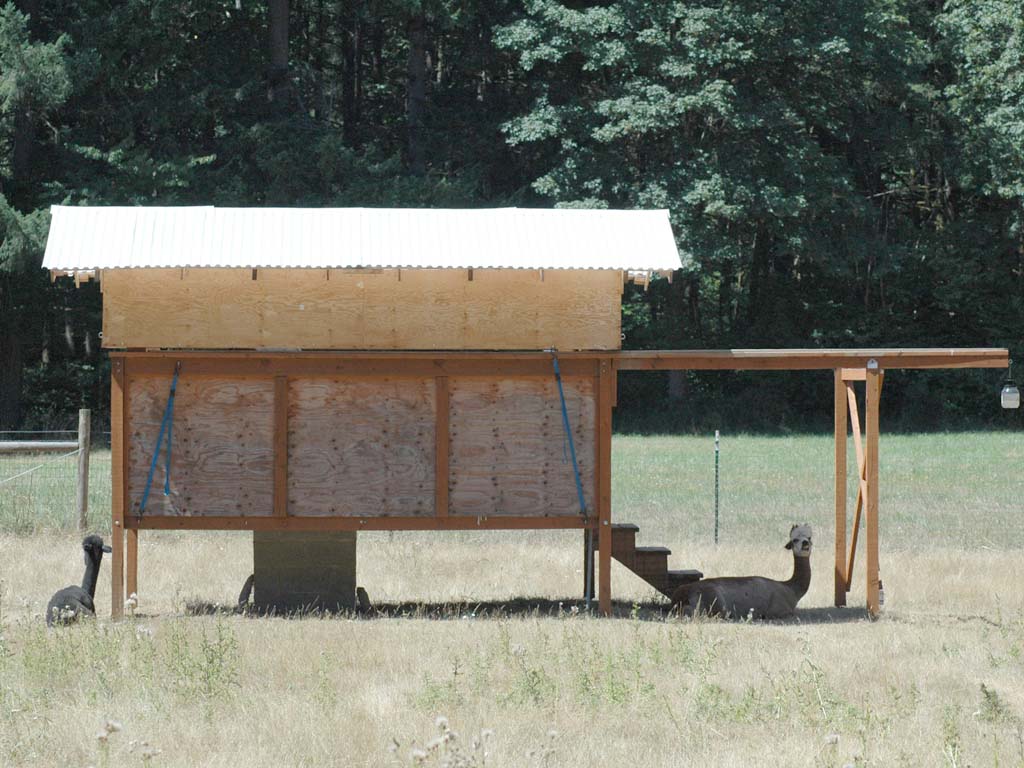 |
Alpaca Meadows Observatory measures 8 feet wide by 12 feet in length. The side walls are a comfortable 4 feet high, and the roof walls are 22" high, making the interior roof clearance 6' 2". This allows me to stand comfortably full height under the rafters. The observing floor is 3 feet above grade, allowing free circulation of air. The light, open construction cools rapidly so the building is not a source of heat and bad seeing.
|
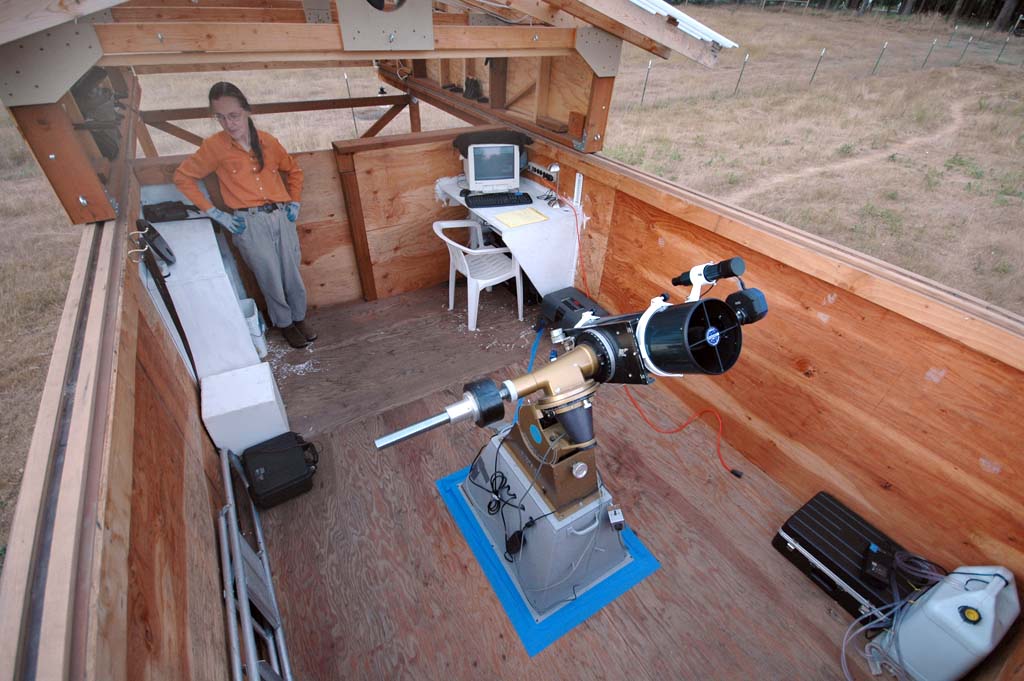 |
The bright daytime interior seems to discourages insects (wasps, etc.) that like dark places for nesting.
|
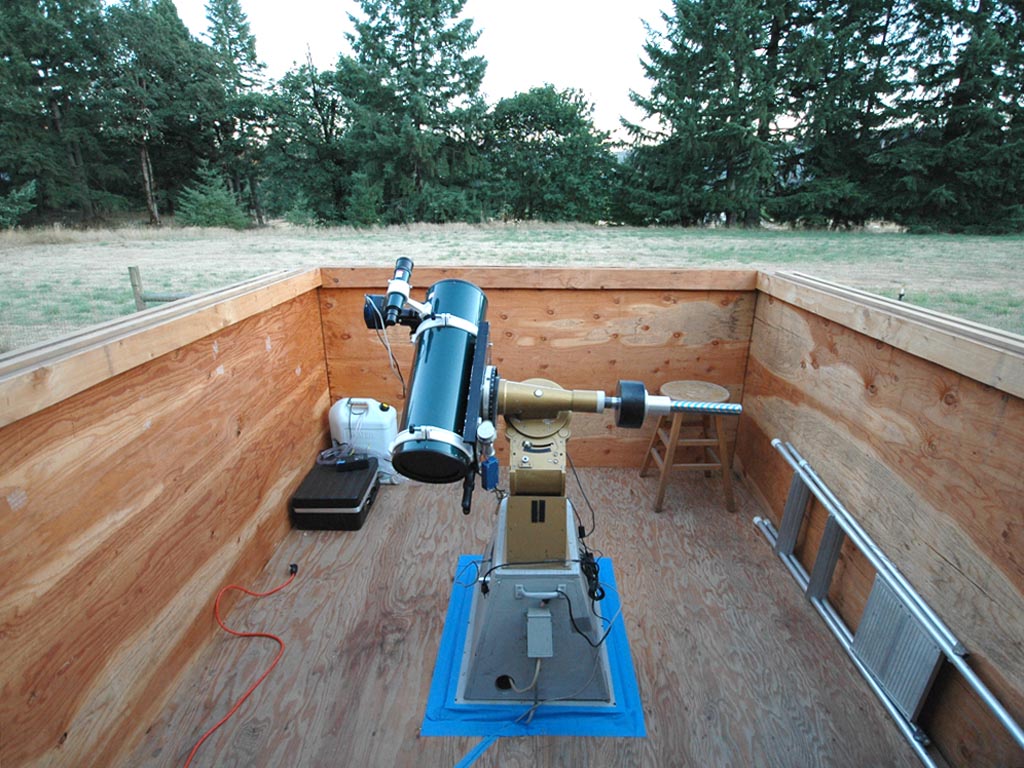 |
The roof rolls away to the north. For good sky access, I don't need to roll it off all the way, so on windy nights I roll it off about three-fourths of the way. At the north end of the observing floor are built-in shelves for storing equipment and a desk for computers and observing gear.
|
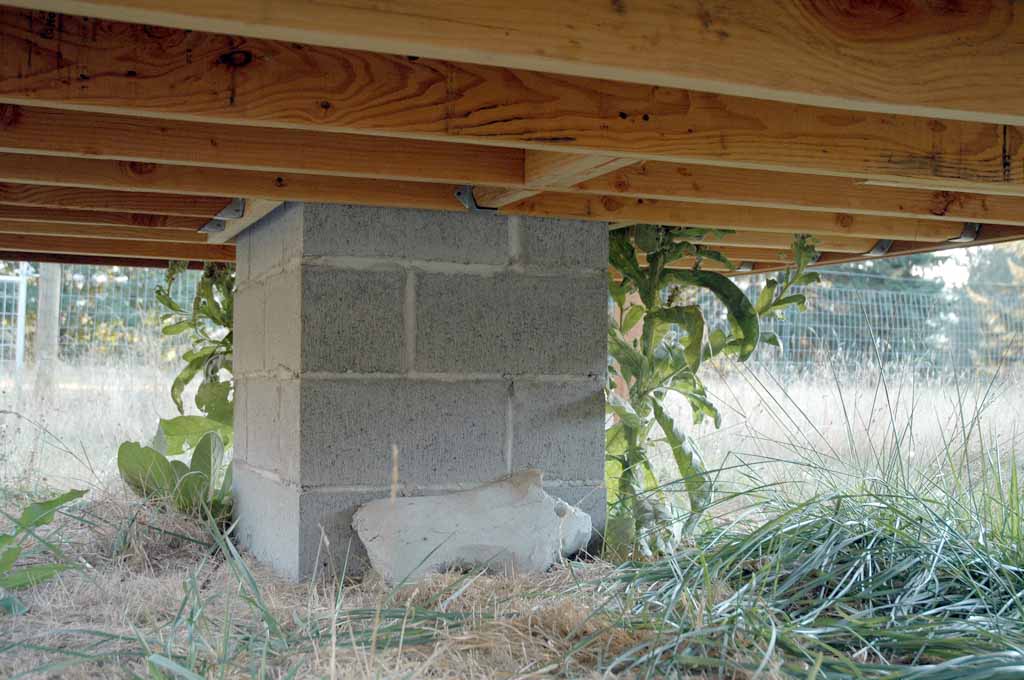 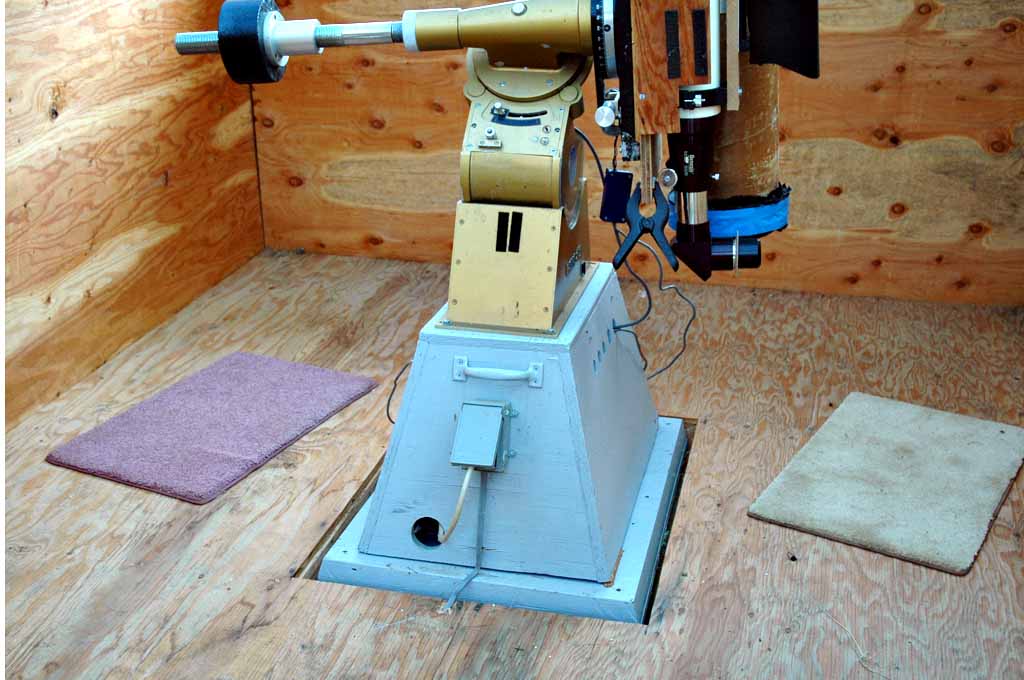 |
The telescope sits atop a 24" x 32" block pier that rests on a concrete base extending well below the frost line. Nowhere does the observatory structure touch the pier, and the limber posts under the building insure that vibration from the observer's movements never effect the telescope.
|
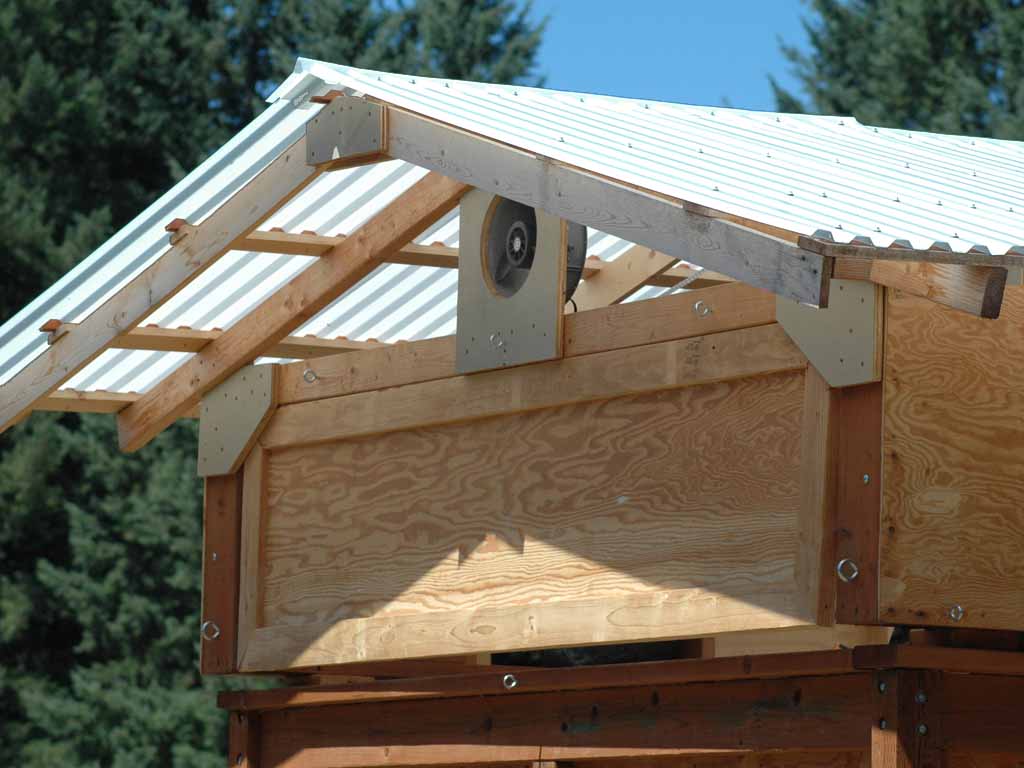 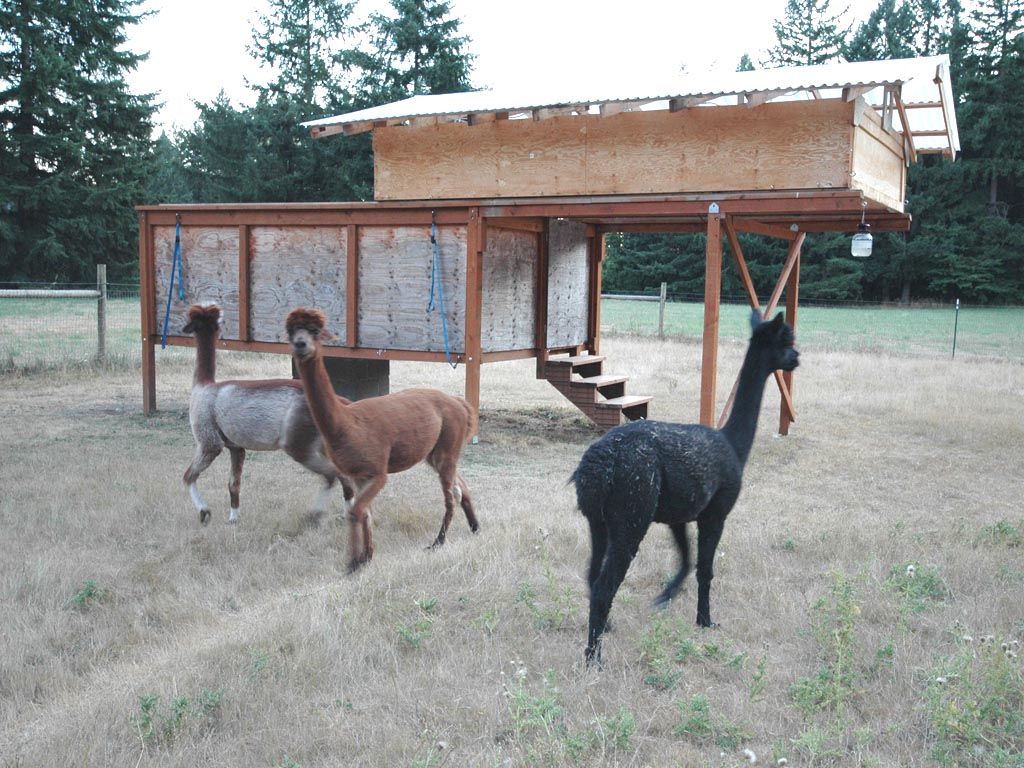 |
|
Red lamps on a dimmer provide indirect low-level illumination. Dim light washing down the interior walls helps maintain good orientation in the dark. For setting up in the early evening, I can brighten the lamps, but in normal use I keep them so low that they are just barely visible.
|
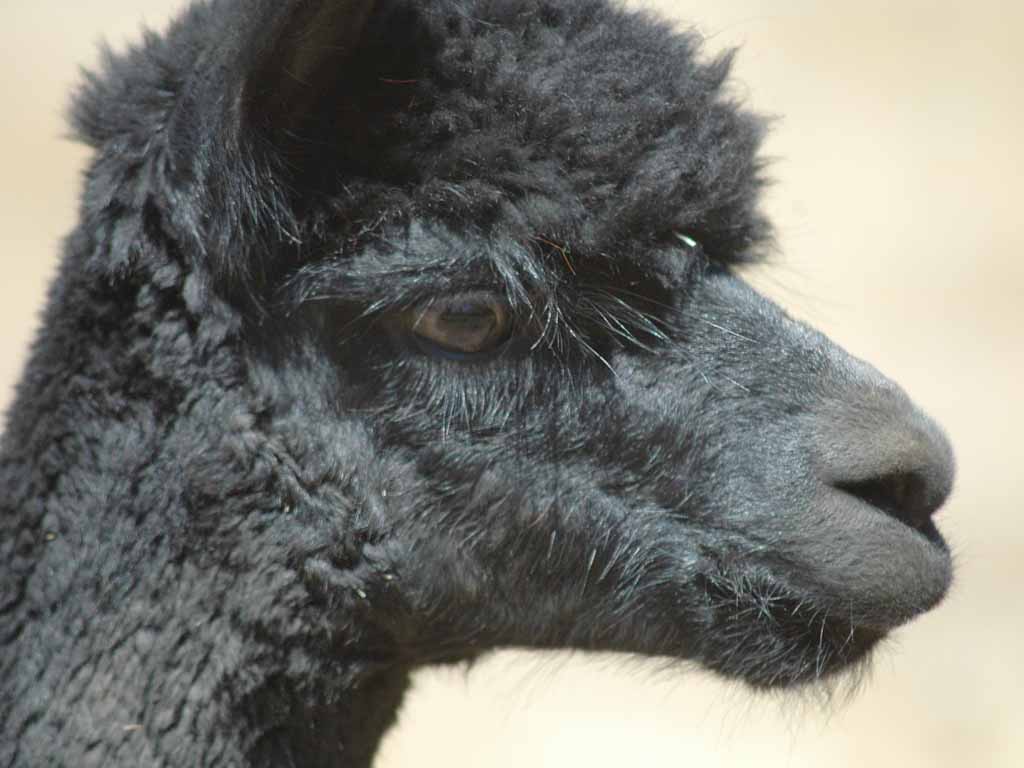  |
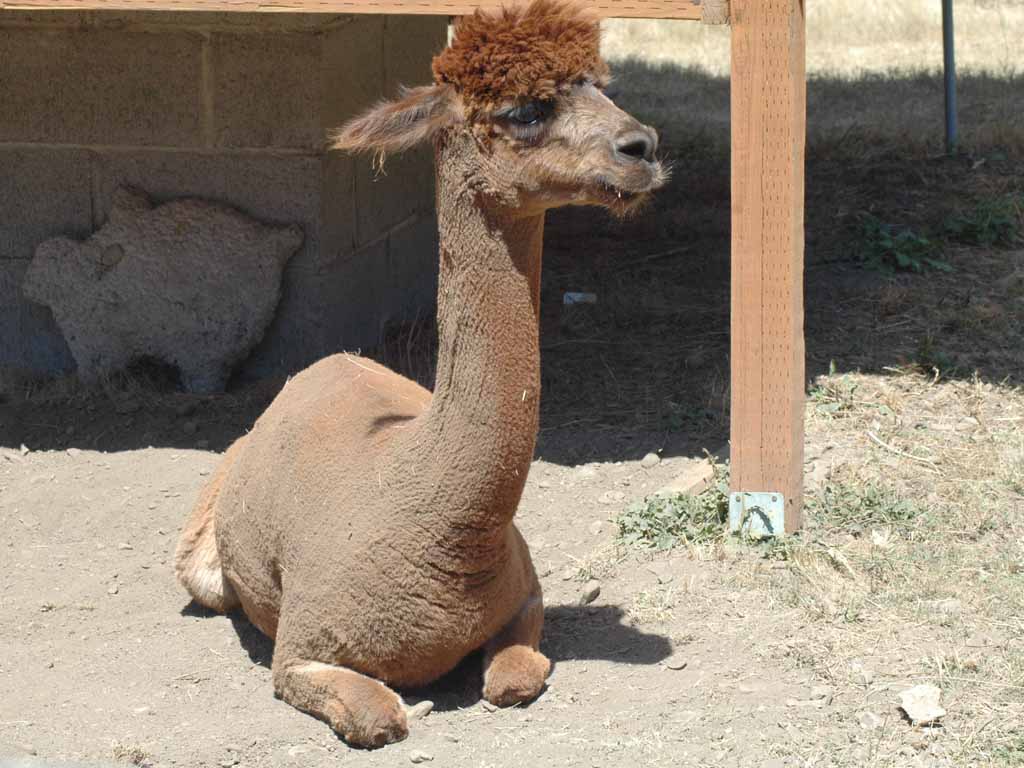 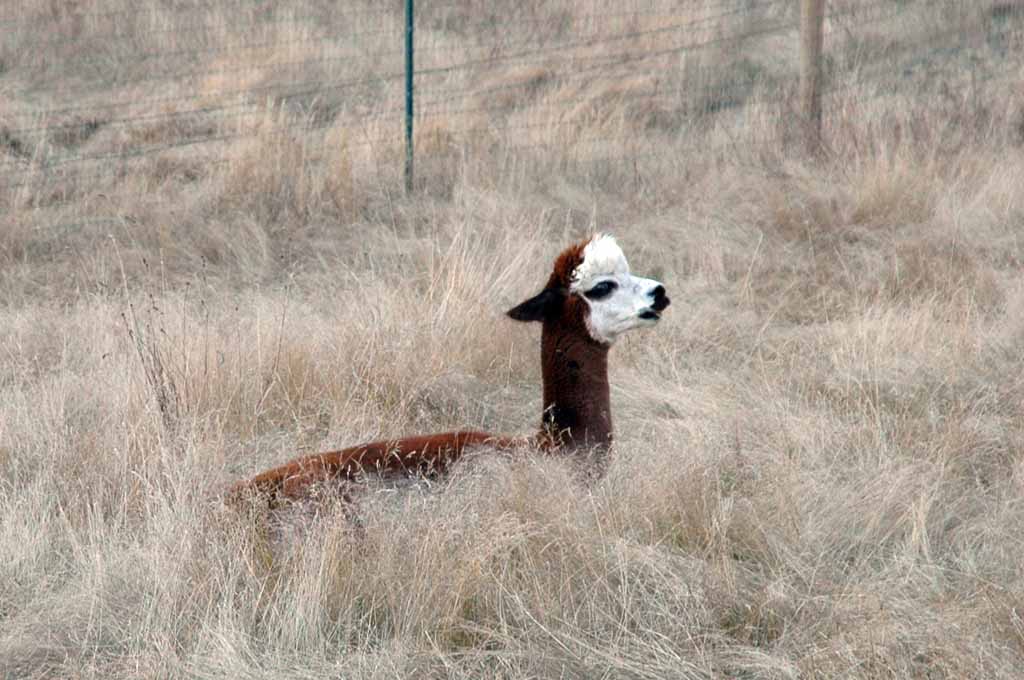 |
These are our three alpacas. Jesse has a rose-gray fleece and a white face; Vega (shown twice) is chocolate brown. Jackson is our newest alpaca; he is a gangly gelded male, true black in color.
|
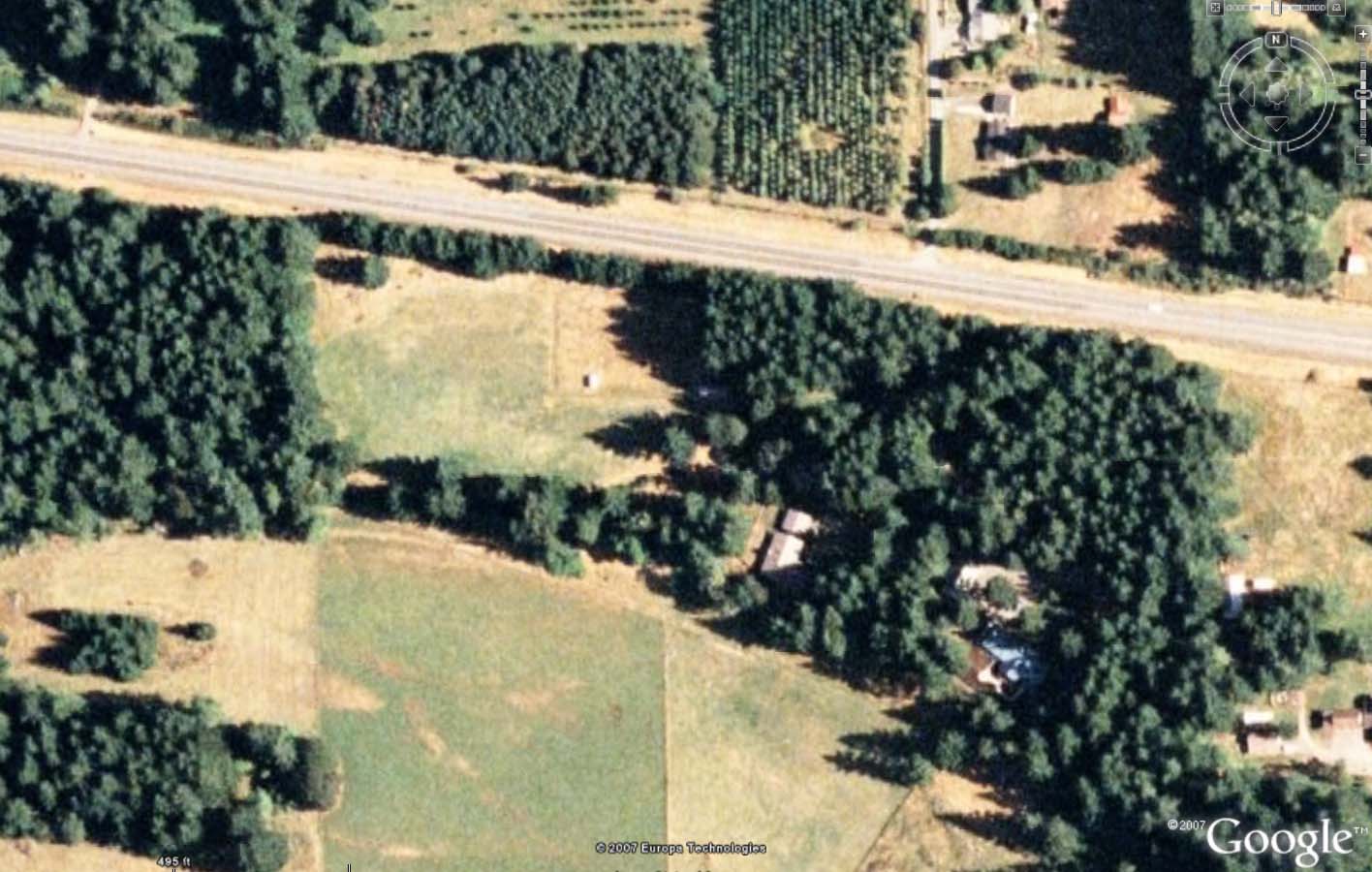 |
I was delighted to find Alpaca Meadows Observatory is visible at a resolution of about one meter in Google Earth. The observatory is the small bright rectangle inside the alpaca enclosure; the barn and its associated gravel heavy-use area are to the east at the edge of the trees. We grow more than enough hay in the 5-acre field to feed the 'pacas, and we sell the rest. --Richard Berry |
Return to Richard Berry's Home Page |
